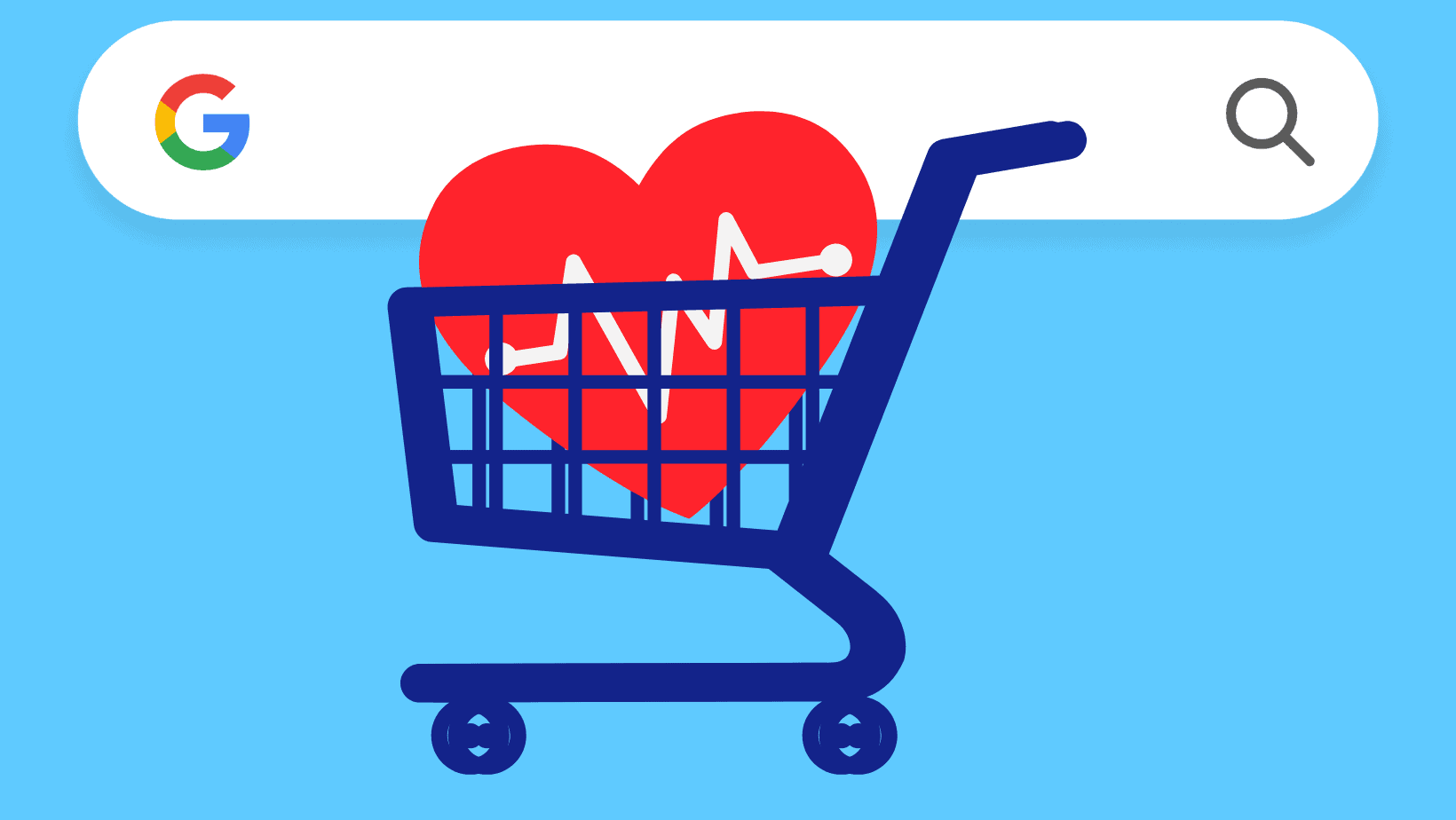Digital health companies constantly need to embrace creative digital marketing approaches if they want to grow in an increasingly-crowded field. One effective but often-overlooked method is Google Shopping. Some digital health providers already take advantage of this campaign type, even devoting the majority of their Google Ads budgets to it for certain product lines. Many others that we speak to, however, haven’t even considered the strategy—even when it aligns perfectly with their offerings and goals.
In this blog, we’ll answer the common questions digital health companies have about Google Shopping, including what digital health offerings can and can’t be promoted through this channel, what advantages Google Shopping offers over regular paid search, and whether these campaigns are prohibitively difficult to implement. We’ll also offer up some key best practices to keep in mind when using Google Shopping for digital health sales.
What advantages does Google Shopping offer for digital health clients?
Shopping ads, or product listing ads, are more visual and immediate, appearing at the very top of the search engine results page (SERP). They also offer more product information upfront compared to a standard Google Search ad, including product images and price, which works to deliver more qualified clicks. Brands tend to see lower average cost-per-clicks (CPC)s and higher conversion rates (CVRs) on Shopping ads compared to Search ads, which ultimately leads to better return on ad spend (ROAS) and lower cost per acquisition (CPA).
Google Shopping is considered a lower-funnel tactic because users are already searching online to buy a specific product, or searching based on problems that the product may help solve. While Search ad placements are limited to the SERP and Google Search Partner sites, Shopping campaigns are now primarily under Google Ads’ Performance Max campaign type, allowing them to appear not just on the Google SERP, but also the Google Shopping tab, Google Images tab, search partner sites, and more. If a digital health advertiser isn’t bound by personalized advertising restrictions, they are eligible for dynamic remarketing, where there are more eligible placements for Shopping.
What types of digital health offerings can you promote through Google Shopping?
Digital health companies that offer physical direct-to-consumer (DTC) products, such as medications, test kits, and medical devices can advertise on Google Shopping—provided they comply with some common sense regulations (which we get into below).
Are there certain items you are forbidden from selling through Google Shopping?
Google restricts the promotion of healthcare-related content such as over-the-counter medication, prescription drugs, unapproved pharmaceuticals and supplements, pregnancy and fertility-related products, and sexual enhancement treatments. If a digital health advertiser has their online pharmacy LegitScript certification, they can advertise approved prescription and OTC medications.
However, there are unapproved medications that Google won’t allow to be advertised, even with a LegitScript certification. Google outlines restricted substances under its Healthcare and Medicines policy and Unapproved Substances and Pharmaceuticals list.
Intangible health services, such as online medical consultations or talk therapy, are not eligible for Google Shopping.
What are the unique advantages for Google Shopping over regular paid search?
With more creative depth and a different bidding mechanism, Google Shopping offers several unique advantages over regular paid search ads. These include:
- Many annotations that show on Shopping ads aren’t available on Search ads. For Shopping ads, you can add product-level ratings and reviews, sale price annotations, price drop annotations, shipping annotations, and return policy annotations.
- The copy acts as the keywords. Unlike the traditional keyword-bidding models used for Search campaigns, users are shown Shopping ads based on Google’s assessment of the ad’s relevance. That means the content of the ads—the copy plus the aforementioned annotations—serves as the keywords, giving advertisers more opportunity to appeal to relevant searches.
- Shopping offers customizable promotion extensions. The Promotion Assets extensions offered in Google Search campaigns are more limited: you can only offer monetary or percent discounts, or “up to x off” discounts. For Shopping Promotions, you can run promotions for discounts (percent or money off, buy one get one free or percent off), gifts (free gift with purchase), or free or discounted shipping.
- Google Merchant Center offers useful information that you don’t get from Search ads. It will show you, for example, how your prices compare to competitors offering the same product so you know whether you are at or above the benchmark price. There is also a “Best Sellers” tab which provides you with information about relative demand for the products you offer.
What are some best practices for using Google Shopping for digital health sales?
When using Google Shopping for digital health sales, it’s important to keep in mind the following best practices:
- Optimize product titles and descriptions to align with how people search for medications. For instance, include both the generic and brand name of medications in the title, while still being clear whether the generic or brand name version is being sold.
- Use high-quality product images and detailed product descriptions to showcase the product and provide useful information for the user.
- Tailor your site’s product detail pages (PDPs) and checkout flows for relevance and ease-of-use to expand your reach and better meet the needs of your customers.
Are Google Shopping ads difficult to set up for digital health?
While these campaigns can be an effective driver for clicks and sales, getting them off the ground can involve a significant time investment.
To use Google Shopping Ads, companies first need to create a Google Merchant Center account, where they can upload their product data feed. This data feed should include information such as product titles, descriptions, pricing, and images. Because this information serves as both to populate the ad copy and convey the ads’ relevancies to Google, it’s imperative that all product data is accurate, consistent, and up-to-date.
While the setup process for Google Shopping Ads can be complex, the benefits can be significant. That’s why it’s important to partner with an agency that has a proven track record of building, deploying, and scaling these campaigns on behalf of health and wellness clients. If you’re interested in learning more about the intricacies of Google Shopping implementation, download the form below—and don’t hesitate to contact ADM to see if these campaigns would be the right fit for your product offerings.




